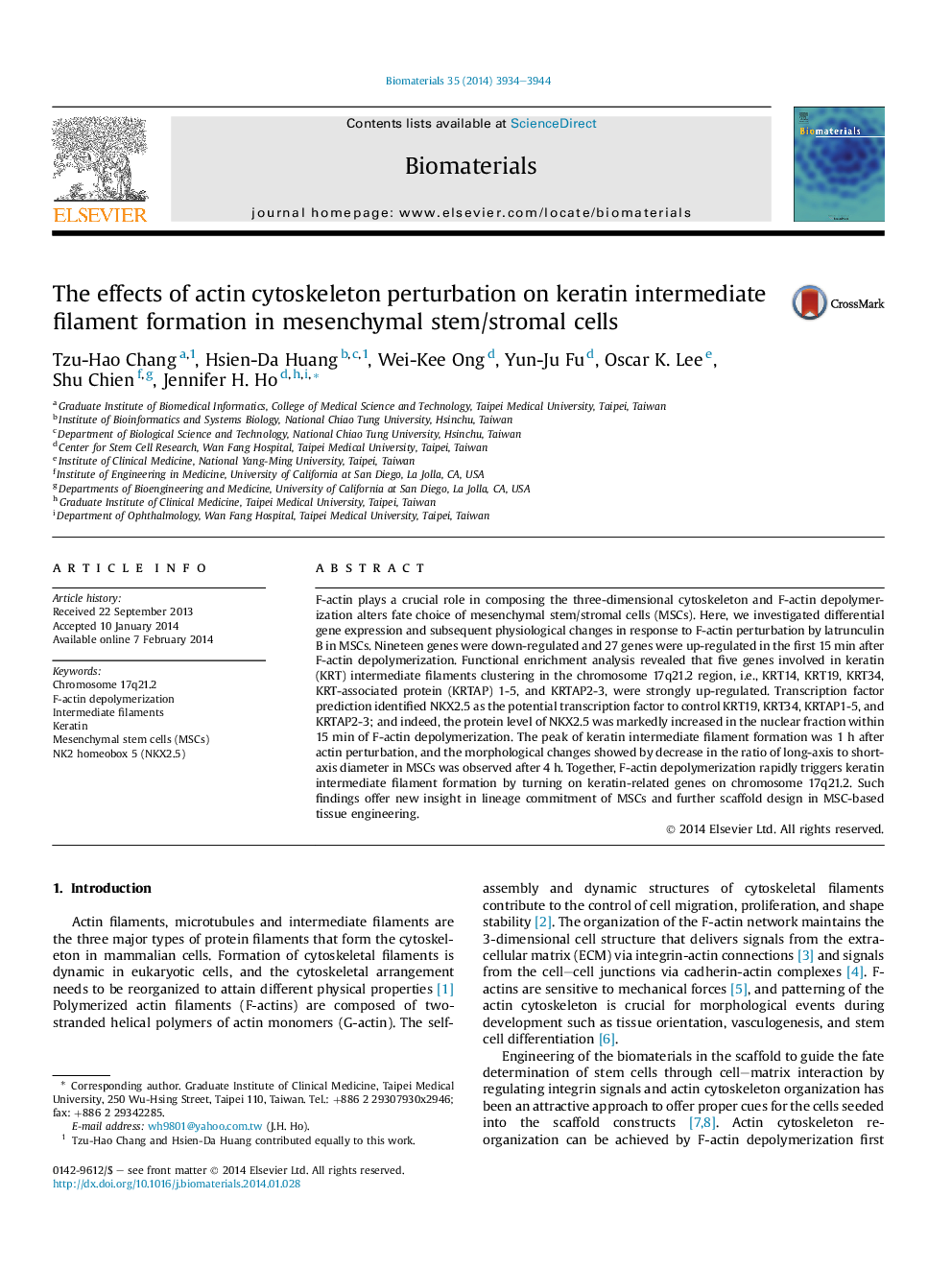| Article ID | Journal | Published Year | Pages | File Type |
|---|---|---|---|---|
| 10228026 | Biomaterials | 2014 | 11 Pages |
Abstract
F-actin plays a crucial role in composing the three-dimensional cytoskeleton and F-actin depolymerization alters fate choice of mesenchymal stem/stromal cells (MSCs). Here, we investigated differential gene expression and subsequent physiological changes in response to F-actin perturbation by latrunculin B in MSCs. Nineteen genes were down-regulated and 27 genes were up-regulated in the first 15Â min after F-actin depolymerization. Functional enrichment analysis revealed that five genes involved in keratin (KRT) intermediate filaments clustering in the chromosome 17q21.2 region, i.e., KRT14, KRT19, KRT34, KRT-associated protein (KRTAP) 1-5, and KRTAP2-3, were strongly up-regulated. Transcription factor prediction identified NKX2.5 as the potential transcription factor to control KRT19, KRT34, KRTAP1-5, and KRTAP2-3; and indeed, the protein level of NKX2.5 was markedly increased in the nuclear fraction within 15Â min of F-actin depolymerization. The peak of keratin intermediate filament formation was 1Â h after actin perturbation, and the morphological changes showed by decrease in the ratio of long-axis to short-axis diameter in MSCs was observed after 4Â h. Together, F-actin depolymerization rapidly triggers keratin intermediate filament formation by turning on keratin-related genes on chromosome 17q21.2. Such findings offer new insight in lineage commitment of MSCs and further scaffold design in MSC-based tissue engineering.
Related Topics
Physical Sciences and Engineering
Chemical Engineering
Bioengineering
Authors
Tzu-Hao Chang, Hsien-Da Huang, Wei-Kee Ong, Yun-Ju Fu, Oscar K. Lee, Shu Chien, Jennifer H. Ho,
